Text

Commission for Twitter user @FoodieTheFox ; a flat colour reference of their saddletank shunter "Vince"!
21 notes
·
View notes
Text

Glug Glug
88 notes
·
View notes
Note
Consider :
Box tank Neil banging out the tunes 🎶
YOURE A GENIUS

520 notes
·
View notes
Text
So, after being reminded of the insanity that is Oliver Bulleid's Leader Class, and by extension some of the stranger aspects of Bulleid's engines in general, I have spiraled off into thinking of a new headcanon / additional bit of characterization for Rebecca.
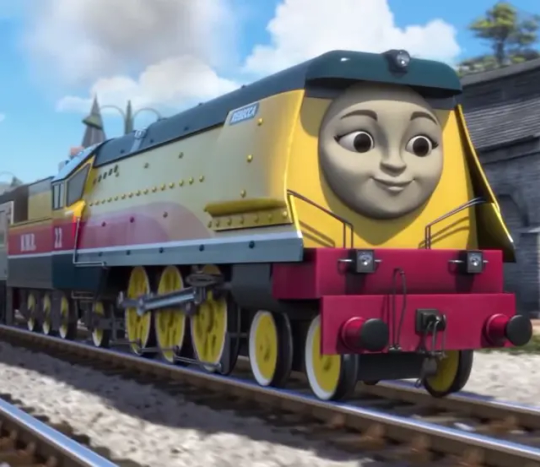
For anyone who doesn't know, Oliver Bullied was the Chief Mechanical Engineer for the Southern Railway starting in 1937, and is partially known for several of his designs featuring some unorthodox features, most notably his use of chain driven valve gear.
Rebecca is a Bulleid Light Pacific, so I feel it would fit to take some inspiration from the previous information about her builder, appropriately turned up to 11 for comedic effect and to fit the overall tone of the BWBA seasons of TTTE.
Consider:
Rebecca as a massive nerd / tinkerer / mad scientist of an engine, who is constantly experimenting with silly, outside the box, and very overly complicated solutions to problems, as well as just trying out various dumb ideas for the hell of it.
She notices her brakes are beginning to wear out and decided to try and extend the time before she has to get them fixed by instead stopping by throwing her wheels into reverse.
Pro: Less damage to brakes
Con: More damage to... everything else.
She hears about how the Skarloey Railway used to run gravity trains and decides to see how far the troublesome trucks can go on their own if released from the top of Gordon's Hill...
On the mainline...
Without telling anyone...
Maybe she spends a lot of time hanging around the Dieselworks of all places, because she's endlessly fascinated by the jury-rigged and patchwork repairs that have been made over the years to the work's equipment.
Den and Dart are confused by this, but feel very honored when Rebecca calls then "resourceful" and "innovative" for how they have kept the Dieselworks running.
There's even some support for this characterization in canon.
Rebecca is shown to be fascinated by the unique features of Harvey, Marion, and Belle in the episode What Rebecca Does and wishes she had something unique for herself.
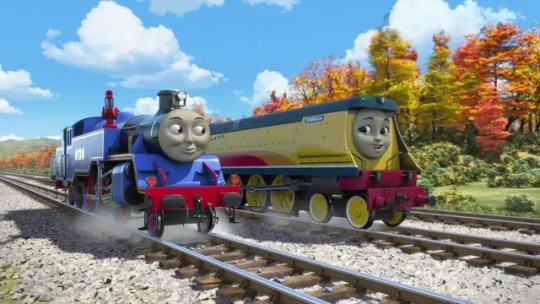
She seems to have an appreciation for unusual designs built to solve specific problems and do special tasks.
Then there's this quote from Rebecca's introductory scene in the episode Confusion Without Delay:
“Hello, sir. And, uh, sorry, sir. I miscalculated how long it would take me to stop…by, uh, quite a lot!”

The use of "miscalculated" feels like it fits with what I've laid out so far, like she actually tried to do the math in her head to come to a precise stop and it just didn't work out.
Now, is all of this very silly and a bit dumb?
Yes
But is it funny?
Also yes
Not only that, but there's honestly some pretty good story potential here.
Like, what if there was an episode with Rebecca and Duck?
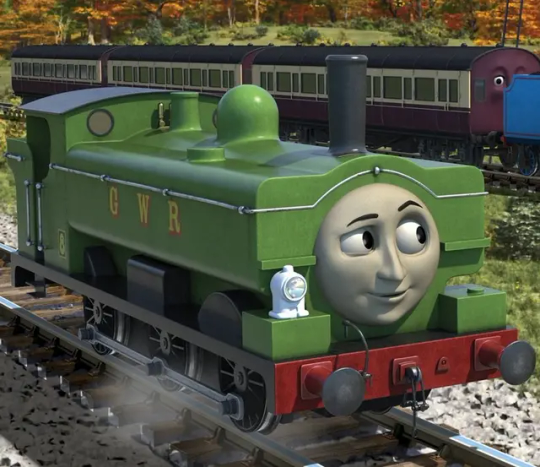
There could be a conflict between Ducks adherence to the tried-and-true and very practical Great Western Way, and Rebecca's desire to always think outside the box and try something new.
And Rebecca's trying to be respectful of and go along with Ducks way of doing things, but frankly she just keeps getting bored and ends up inevitably distracted with trying out he own new ideas.
Most of them don't work, and fail in comedic fashion.
But one of Rebecca's ideas actually looks like it could succeed...
Until Duck, but now tired of the delays to his work, interrupts and unintentionally causes the whole thing to fall apart.
The eventual resolution to this story could then come in the form of the Slip Coaches being brought into the mix.
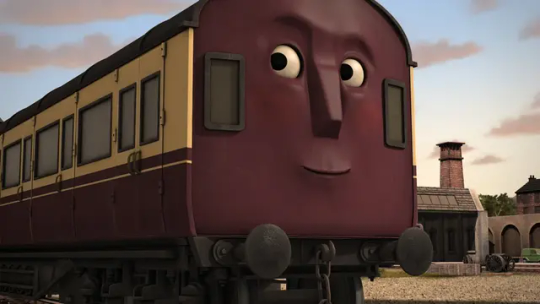
The Slip Coaches, who are a product of the Great Western Railway, and yet are also an example of a seemingly strange and outside the box idea, which proved to be successful when given the chance.
The story could then conclude with the moral of how some ideas that seem stupid might just need a bit of extra time and patience to develop and refine them into a practical application.
38 notes
·
View notes
Text
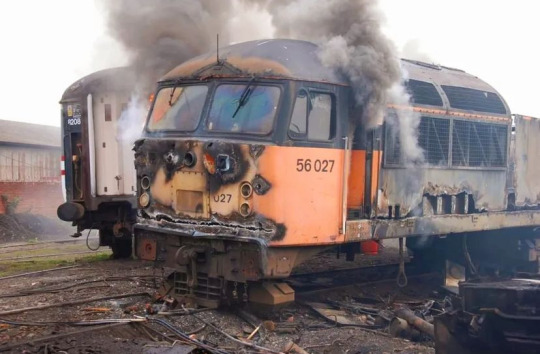
Burnin’
#real train stuff#train#trains#train pictures#train derailment#I see the diesel’s taken up smoking#lol#I crave context
10 notes
·
View notes
Text
So we all know that Awdry originally had James as a GSWR Class 403 since it fit the description of an inside-cylinder mogul, but later changed James to be an English design. This post stems off the thought of "What If Awdry kept James Scottish?"
This whole thing was also brought on by @mean-scarlet-deceiver's Tales of the G&SW excerpts.
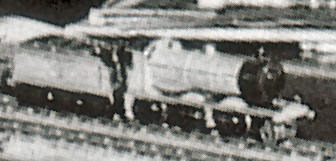
Beware, my writing of a Scottish accent is terrible, try not to cringe.
What If Scottish James
Written By: SparkArrester
1929
James was in a foul mood. Henry, like usual, failed. Now he was stuck with his coal train. That he had to arrange himself. Apparently the new shunter was busy with something that wasn’t shunting.
“Stupid Trucks, stupid coal, stupid everythingggg”, He moaned as he marshalled his train, “All that time being cleaned was a waste!”
The trucks, sensing an opportunity for mischief, made it their mission to give James the worst morning possible. They jammed their brakes, ran hot axles boxes, and some even derailed in the yard. The breaking point was when an old tippler’s front hatch flew open. Coal poured out onto the rails, and onto James, coating his front end. The trucks all burst out laughing, but they were soon cut off.
“Yee wretched little INGRATES!”, Burst out James in a perfect scottish dialect, “Ye all oor jus’ little devious muckle nuisances that are no fit ta scrape ta scale oof me boiler, ye little wee gobshites!”
This continued for some time, until James heard a familiar whistle, and immediately blanched. Percy rolled in looking gobsmacked.
“Err, uhh, hey James?”
“Wha arr ye -ahem- what are, uh, you doing here Percy?”
“Coming to take over the shunting.”
“Ah, right.”
“...”
“... Percy.”
“Yes?”
“Please don’t tell anyone…”
“James, I’m pretty sure everyone on this side of the island heard you.”
“... Dang it.”
1951
James sat there, covered in tar. His crew had already gone to the station to phone for help, and one of the old Suddery Tanks brought a crane to assist. He was hoping for an engine like Edward or Henry to take him to the works. In the meantime, quietly grumbling to himself was good enough. In fact, he was so absorbed with himself that he forgot his surroundings.
“Stupid wee muckle nuisances…”, he muttered, “Stupid Toby. If ‘e wasnae a huge prat my red coat wouldnae be in ruins. Honestly, those wee branchline engines are nothing but great big pieces ‘o-”
A ring of a bell broke him out of his thoughts. He jumped back as he realized Toby and Percy were right beside him. He prayed they hadn’t heard him. They did.
“Ark ay Percy!”, Chortled Toby in a terrible Scottish accent, “Whatever isnae that dirty object!”
“That isn’t even how you use isnae…”, muttered James, but of course they took no notice.
They continued speaking in terrible accents all the way to the sheds. James didn’t know if he should be angry at their teasing, or their complete butchering of his old dialect (one he had tried his hardest to shake), so he settled for both.
1959
The Fat Controller had brought a new goods engine to help out. James was glad at first, now someone else could work the pick-up goods while he got more passengers. He had heard that there was something up with the new engine when it had arrived, but he didn’t put much stock into it. Later in the day, he was backing down on what would hopefully be his last pick-up goods in a while when he heard a whistle. A deep-toned whistle that he had not heard in years. James grimaced as a Caledonian steam engine pulled up on the adjacent line, giving him the stink eye.
“Well Well Well…” The Caledonian spat, “A Sou’-West engine. And one of Pee-Wee Drummond’s oven-boxes! Ah hoped we saw the last ‘o ye back ‘ome!”
“The feeling is most certainly mutual!” He replied with vitriol that wasn’t really there. He hoped to leave everything pre-sodor behind. But of course it had found him. At least he still had a slight bad opinion towards the Caledonian, it did him good in this confrontation.
“Ark aye!”, Exclaimed the Caledonian, “Why do ye soond like tha?”
James was taken aback, “Like what?”
“There it is again! Aye Douggie!”
The question of who “Douggie” was got itself answered quickly, when an identical Caledonian engine pulled up besides the first.
“Aye Donnie. What’s up!”
“Wait wait, just let that Sou’-West engine speak!”
James defiantly shut his mouth, but then his crew chose that exact time to ask him something. He replied as quietly as possible. But not quiet enough.
“O Aye!” Exclaimed “Douggie”, “He soonds like a wee sassenach!”
James went red in the face, “Well! I-I-I-”
“Tha accent is ass!” Chortled “Donnie”, and soon “Dougie” joined in.
They continued until James left, his face matching his paintwork. He put a good few months practicing his accent, and it was hard. He now figured out what exactly was up with the new engine: there were two of them, and they both sucked.
#ttte#ttte james#ttte percy#ttte donald#ttte douglas#ttte toby#what if scottish James#General RWS Stuff
85 notes
·
View notes
Text
Bulleid's Proposed Locomotives
So it turns out Bulleid had so many of his designs dropped for one reason or another, and since I can't stick with a single project for more than a few seconds, I wrote up histories for all of them!
Enjoy the ramblings of a madman who spent a good long while finding free number slots for them.
Southern Railway Warship Class
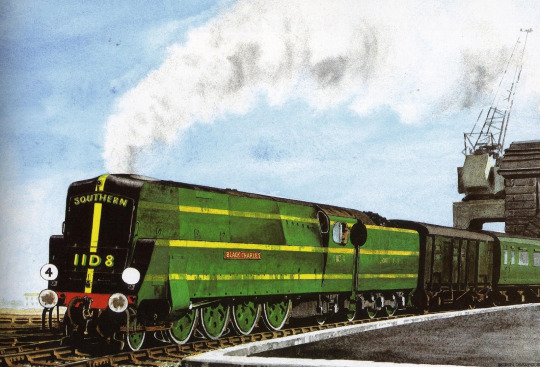
The Southern Railway was the most financially successful of the "Big Four", but this was largely based on investment in suburban and main line electrification. After the successful introduction of the SR Schools class in 1930, the railway had lagged behind the others in terms of modernizing its aging fleet of steam locomotives, as they were more focused on Electrification. Following the retirement of the general manager of the Southern Railway Sir Herbert Walker and Richard Maunsell the Chief Mechanical Engineer (CME) in 1937, their successors considered that the time had come to change this situation. In March 1938 the new general manager Gilbert Szlumper authorized Oliver Bulleid, Maunsell's replacement, to prepare designs for twenty express passenger locomotives. The deteriorating international situation prior to the Second World War was an additional factor in this decision.
Originally, Bulleid had wanted a 4-8-2 Mountain Type, but the Civil Engineering department had resisted this based on size and weight, so a 2-8-2 was chosen instead. Bulleid had worked with Gresley on his P2 2-8-2 express engines, so he already had some background knowledge, especially with the P2’s problems and ideas on how to solve them. Of course, due to the war, they were classified as heavy mixed-traffic engines to get around wartime regulations.
They were built with high-pressure 280 PSI boilers and three 18inx26in cylinders, as well as being the first engines to use Bulleid’s chain-driven valve gear, though the middle cylinder had to be inclined steeply to clear the first driven axle. The boiler was partly welded to save on cost, and the inner firebox was made of steel. The Southern had no facilities to build these boilers, so it was subcontracted to the North British Locomotive Co., as well as Beyer Peacock. They were also fitted with Bulleid’s Air-Smooth Casing. Unlike later designs that utilized this, the casing on the Warships both served their function purpose as labor saving as well as being able to be passed off as some sort of streamlining. How Bulleid got that one through during the war is a mystery! The Warship’s were also the first to use Bulleid’s Firth-Brown Wheels.
10 of these engines were constructed in 1940. More were set to be produced, but once again, the Civil Engineering Department expressed their discomfort at such a large engine running at high speeds with only a single pony-truck in front, despite other engines of a similar design getting on fine elsewhere. This would lead Bulleid to designing and building 30 of his well-known Merchant Navy Class 4-6-2s.
They were named after Warships as a way to increase morale, with 11D1 being officially named “Dreadnought” in April 1940. They performed well in service, hauling heavy passenger and express goods, though the Chain-Driven valve gear was sensitive and required high maintenance, as well as the oil-bath having leaking problems, contributing to wheel-slips(Though the extra wheel helped negate this as well). The casing, while it did save on labor during cleaning, and the more streamlined appearance helped with publicity, it made maintenance hard to carry out. Surprisingly, thanks to their different front ends, they never really experienced drifting smoke like Bulleid’s Pacifics.
All 10 of the engines would be passed into British Railways, numbered 37001-37010, where their duties mostly stayed the same. 11D8 “Black Charles'' took part in the 1948 locomotive exchange trials, where it was compared to LMS Duchess pacifics and LNER A4’s and A2/2s, where it performed favorably, though the chain driven valve gear and its oil bath still caused headaches. After the Crewkerne incident, BR chose a rebuilding program of any engines that still used Bulleid’s Chain Driven motion, however, as the Warships had required far less modifications that the Pacifics, they were on the bottom of the list in the rebuilding program. In the end, only 37003 “Triumph”, 37009 “Warspite”, and 37010 “Exeter” were rebuilt in 1956, 1957, and 1959.
Despite their status as a class with very few engines, all ten would survive until the end of southern steam, going between 1965-1966.
Two are preserved, both being rescued from Barry Scrapyard in Wales. These examples are Class Pioneer 11D1 “Dreadnought”, as well as 11D3 “Triumph”.
Stats
Power Classification - 8MT
Built - 1940 to 1941
Boiler Pressure - 280 PSI
Cylinders (3) - 18in x 26in
Wheels (Driven) - 6ft 2in
Wheels (Leading) - 3ft 1in
Wheels (Trailing) - 3ft 7in
Wheels (Tender) 3ft 7in
Tractive Effort - 40,640 lbf
Total Length - 74ft 8in
Fleet
11D1 (37001) - Dreadnought
11D2 (37002) - Anson
11D3 (37003) - Triumph
11D4 (37004) - Vanguard
11D5 (37005) - Ark Royal
11D6 (37006) - Audacity
11D7 (37007) - Valiant
11D8 (37008) - Black Charles
11D9 (37009) - Warspite
11D10 (37010) - Exeter
Southern Railway Prototype Light Pacific
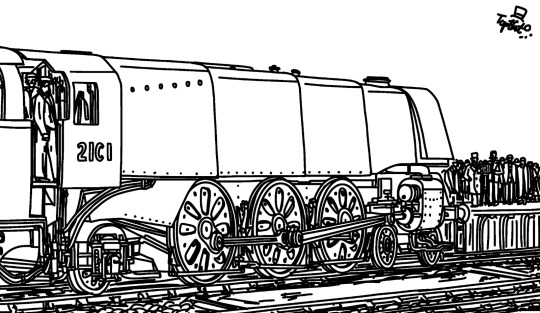
(Pic by Sttophat on twitter)
In 1941, Bulleid had introduced his Warship Mikado's and Merchant Navy Pacific's to become the main motive power for the Southern Railway’s Express passenger trains, though while they performed well, they were restricted by their weight, especially since the condition of the rails were hampered by the Second World War. Initially, trains on the lighter sections were handled by the Q1 0-6-0 freight engines and other, older engines, but they couldn’t handle the faster trains that were anticipated after the war. There was also the planned electrification of certain areas after the war, so the new design also needed to handle freight traffic as well, fast enough to not impede electric services.
What was decided on in the end was a downsized version of the Merchant Navy’s, fitted with the same design theory of the Q1’s to create a “Light Pacific”. The Locomotive was completed in 1942 alongside the Q1’s, and was trialed for a short time before entering service. It was deemed a success, and numbered 21C201. It was powerful enough to handle fast, heavy trains, as well as having an extremely light axle loading for a pacific at 16.5 Tons, enabling it to be used on almost every part of the UK Network as a whole. However, Bulleid decided to go with a different approach, creating simply a downsized Merchant Navy with no Q1 elements. This would increase the axle load, though this wasn’t much of an issue, as the Battle of Britain and West Country Class Light Pacifics still had a high enough route availability for the work they were assigned. Thus, the “Q1 Light Pacific'' would remain a one-off.
During the war, No.21C201 would actually travel a fair amount, and would regularly venture out of Southern territory, its light axle-load coming in handy. After the war however, it would mostly stay in the South. Performance-wise, it seemed to inherit all of the good qualities from the Q1’s and the pacific’s. The light-weight was already a plus, coupled with a great, free-steaming boiler and additions that made the driver and fireman’s life easier. However, it also inherited the bad aspects as well. The chain-driven valve gear was a well-known headache on bulleid locomotives, but there was also the issue that its light-weight caused. The regular Light Pacifics had trouble starting heavy trains thanks to their weight, but No.21C201 had it worse, especially with the well-known issues with the oil bath the valve gear was situated in. The light weight would also affect braking power as well, making unfitted trains harder to stop, a trait inherited from the Q1’s.
No.21C201 (Now Renumbered 34000) was not considered for rebuilding like the other Bulleid Pacifics due to its one-off status. It would be given a general repair in 1960 before spending the rest of its life at Nine-Elms, mainly working express and semi-fast goods trains and the occasional passenger turn during peak period and summer excursions. It was withdrawn from service in 1966 and broken up at Eastleigh.
Stats
Power Classification - 6MT
Built - 1942
Wheels (Driven) - 6ft 2in
Wheels (Leading) 3ft 1in
Wheels (Trailing) - 3ft 7in
Wheels (Tender) - 3ft 7in
Boiler Pressure - 250 psi
Cylinders (3) - 16.5in x 24in
Tractive Effort - 28,145lbf
Total Built - 1
Southern Railway L1 Class
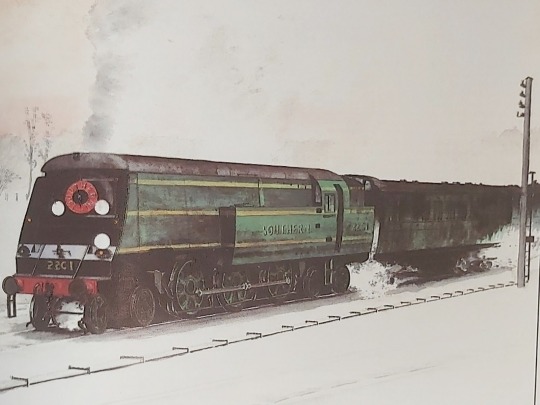
Bulleid designed these locomotives during the Second World War, but construction didn’t begin until 1946. They shared many components with Bulleid’s Q1 0-6-0 goods engines, and were essentially the Q1’s with an Air-Smoothed Casing and a bigger boiler (though the firebox was identical with that of a Q1’s).
Twelve of these engines would be constructed between 1946 and 1948, with the final 3 being built by British Railways. They were originally numbered 22C1 to 22C12, though they were renumbered in 1949 to 36101 to 36112. They were originally meant for short distance goods and passenger services, though they never really found their footing in this role. The passenger trains that usually necessitated big tank engines were already being handled by electric engines, and everything else usually required smaller and lighter engines, which meant that, despite inheriting the power and efficiency of the Q1, the added weight and size meant that they were barred from where they could be most effective. The goods work they were meant for were also in the care of both Q1’s and Maunsell’s Q Class, as well as the many N class moguls already in service. In the end they spent their time hopping from shed-to-shed before settling on ex-LSWR territory, and even venturing into Western Region territory.
They were withdrawn between 1962-1964. Only one survives, 22C9 (36109) on the Bluebell Railway.
Stats
Power Classification - 5F 4P
Built - 1946 to 1948
Boiler Pressure - 230 PSI
Cylinders (2) - 19in x 26in
Wheels (Driven) - 5ft 1in
Wheels (Bogies) - 3ft 1in
Tractive Effort - 30,080 lbf
Southern Railway Dock Class
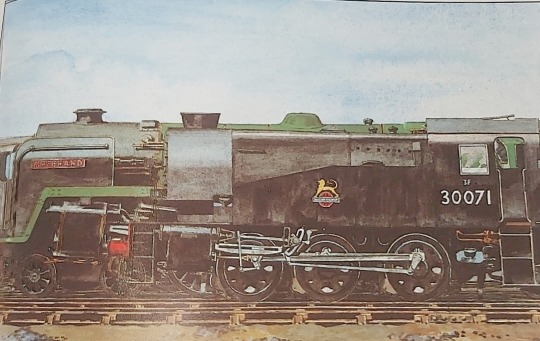
After the Second World War, many of the Southern Railway’s shunters (mainly those at Southampton) inherited from pre-grouping companies were worn out and needed overhauling. As such, Bulleid opted to replace them outright with his own design of 0-6-0T, with a short wheelbase of 10 feet to enable it to negotiate the tight curves. Like many of Bulleid’s designs, he equipped it with a relatively high boiler pressure.
Six would enter service in 1946, and while a total of 18 were planned, this would never come to be, as Eastleigh works was not in a position to build new locomotives with the backlog from the war. In the end, the southern found it cheaper to purchase ex-USATC S100 dock shunters, as they fulfilled most of the requirements needed.
They were numbered C201 to C206, and were renumbered to 30071 to 30076 in British Railways days. The first, 30071, was built with the Idaglass boiler lagging and casing as used in the Q1 class, while the other 5 were built with conventional boiler lagging and tanks. 30071 would be rebuilt like the others in 1953.
The class would lead uninteresting lives as dock shunters in Southampton and Dover until their withdrawal between 1961-1962. One was initially purchased for preservation but the deal fell through. None are preserved.
Stats
Power Classification - 3F
Built - 1946
Boiler Pressure - 220 PSI
Cylinders (2) - 16in x 24in
Wheels (Driven) - 4ft 6in
Tractive Effort - 21,276 lbf
#oliver bulleid#what-if engines#train#I have way more of these if you guys want to see them#or maybe I'll just do it anyways lol
47 notes
·
View notes
Note
I think Steel Fireboxes were just cheaper and wore out quicker, that's why the ROD 2-8-0s and Bulleid's Pacifics had 'em.
Besides I don't think the LBSCR needed a pacific lol, they only ever needed the Marsh Atlantics + The Big Tank engines for heavy passenger work, and the Tank Engines fit the LBSCR's needs way better.
If Henry is tangentially related to the Ivatt C1s like a lot of people say, there's really no reason he needs to be a rival-built stolen A0 prototype; the LBSCR could have just thrown together an extended version of the H2, cheaped out during wartime (even moreso than usual) giving him a steel firebox, and decided they didn't like him and sold him off. The Sudrian firemen, not used to a steel firebox, have no idea how to fire him properly leading to atrocious steaming, even with his decently sized firebox.
Incidentally, this same scenario could be done with a regular H2 to have Atlantic Henry without changing his character arc too much.
We are jettisoning Island of Sodor as canon in this scenario... right? I find I can't quite remember now how firmly Henry's IoS entry establishes his origins, nor can I find my pdf right now.
I'm very intrigued to learn about this steel firebox business. Is that an LBSCR specialty in general or just something they tried out on this hypothetical experiment?
#ttte#chatter#ttte henry#One of the L Class was gonna be built as a 4-6-0 but the 4-6-4T worked so good they vetoed that and went with 4-6-4Ts for the rest of them
25 notes
·
View notes
Text

Gijinka designs of some steam engines
558 notes
·
View notes
Text

Kings of this yard
#train derailment#trains#train#real train stuff#train pictures#that bufferbeam’s gonna need straightening out…#lol
20 notes
·
View notes
Text
Made some fun variants of my Thomas sprite ! First, an Awdry accurate thomas, and second, MY Thomas after first arriving on Sodor in 1915 !


26 notes
·
View notes
Text
The Vicarstown Car Ferry

Above: This is not the Vicarstown car ferry train. I just needed a screenshot of a car on a train, and this was the closest I had to hand.
Every year, the Island of Sodor receives thousands of visitors from the Mainland, and obviously, the vast majority come by rail. A significant number, however, choose to arrive by car. Nowadays, this is no trouble, as they can simply drive across the Jubilee Bridge, which carries the main A950 road over the Walney Channel.
The bridge only opened in 1977, though, and any motorists arriving before then had to rely on the NWR's services to get themselves and their cars on and off of Sodor. And thereby hangs a fascinating tale about a little-known aspect of the NWR's history.
EARLY NWR EFFORTS
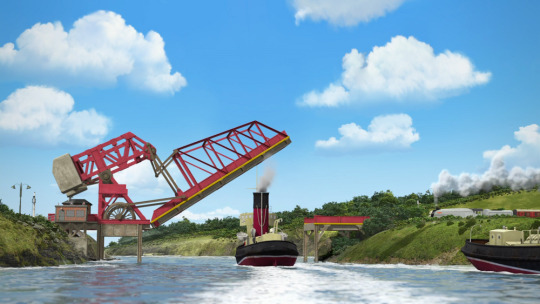
Above: The Vicarstown Bridge, in an undated view (obviously post-1975, given the presence of Spencer).
It all started with the construction of the NWR's own bridge over the Channel in 1915. In those days, there was no other link between Sodor and the Mainland, and thus no other way for goods and passengers to arrive. Some of those passengers wanted to bring their own horse-drawn carriages with them, and so was born one of the earliest vehicle-and-owner trains to run on Sodor.
To begin with, it was simply a case of strapping the vehicle to a special carriage truck, and coupling it up to whatever passenger train its owner was travelling in. The truck then travelled as far as the nearest station to wherever the owner was going, where it was detached and the vehicle rolled off.

Above: For a time, the NWR also offered the use of a horsebox in conjunction with a carriage truck, so that the carriage’s owner could take his own horse with him, and avoid having to search for one at the other end of his journey. This cost extra, though, so there were few takers.
THE VICARSTOWN CAR FERRY
With the boom of private motoring in the early-1920s, there came a similar explosion in demand for the carriage of road vehicles by rail. This in turn resulted in the NWR running its first dedicated car-carrying trains - albeit only on an as-and-when basis, and with cars and drivers travelling in separate trains. The NWR did not return to vehicle-and-owner trains until 1927, when it launched a regular car ferry service between Vicarstown and Barrow-in-Furness - probably the best-known of all its car-carrying trains.
This new service had been made possible by the 1925 LMS Agreement, which gave the NWR running powers into Barrow, and in turn required Vicarstown to be converted for through running. Among the changes which resulted was the conversion of the adjoining goods depot to handle parcels and mail (goods facilities moving to a new depot elsewhere), and the closure of the existing parcels platform. This platform was thus free for conversion into a loading dock for the new car ferry service.
OPERATIONS
Throughout the fifty years the car ferry service ran, the basic pattern of its operation remained much the same, with only details like the motive power, rolling stock and timings seeing much change. It is thus worth looking at a typical journey for the service, starting at Vicarstown and ending at Barrow.
Below: A vague representation of how the loading process would have looked. I've employed a bit of artistic license with this photo: while the NWR did have some enclosed double-decker car carriers, these were never used on the car ferry services.

To begin with, the consist for that particular crossing was shunted into the station - the carriage trucks going to the loading dock, and the passenger coaches to one of the through platforms. Drivers and passengers boarded their coaches, leaving their cars to be loaded by the station staff. Once loading was completed, the carriage trucks were marshalled and coupled to the coaches. All shunting was done by the train engine, who then ran round to the front and hauled the train to Barrow. On arrival, the whole train was shunted to the loading dock there, where passengers and cars were unloaded together. The stock was then taken away for servicing.
Of course, it goes without saying that in the opposite direction, the whole procedure was repeated, only in reverse.
In all, ten car ferry trains ran daily (five in each direction), with provisions in the working timetable for an extra four (two in each direction) if they were needed - say, during the busier summer months. To avoid overcrowding, a maximum of 20 cars were allowed on each crossing, and motorists had to book in advance. This enabled staff to work out how many carriage trucks were required, and what types, well ahead of time. It also allowed them to work out how many passenger coaches were needed - the rule here was that there should be at least one compartment for every car carried.
In the early 1930s, the NWR began allowing larger commercial vehicles to make use of the car ferry trains, and this required a slight amendment to the 20 cars rule. This amendment counted the size of a vehicle in car lengths - if, for example, a lorry turned up which was as long as three cars, then it took up three slots on that particular crossing. Any number of vehicles could thus travel on a single train, so long as their total length did not exceed 20 car lengths.
STOCK
The car ferry trains never had a specific engine allocated to run them - generally, any engine could do the job if they happened to be at Vicarstown or Barrow at the right time. As the NWR’s locomotive roster expanded, the car ferry became the exclusive preserve of the engines based at either of those sheds - the job generally being allocated to any engine who wasn't busy anywhere else that day.
The car ferry was also a neat way of getting an engine from one station to the other, without having to find an extra path for a light engine movement. For similar reasons, it was not uncommon for visiting LMS (later BR) engines to take charge of a Barrow-bound car ferry on their way home.
Below: An example of a long-wheelbase covered carriage truck. Many were later converted for parcels, newspapers or general goods traffic. This particular example went into departmental service, and in this view is carrying engine parts.

As far as rolling stock was concerned, this mainly consisted of both open and covered carriage trucks (henceforth referred to as OCTs and CCTs respectively). When the service first started, cars were carried on short-wheelbase OCTs, but these proved unpopular with motorists, as the cars often had their paintwork spoiled by smoke and soot spewing from passing engines - and sometimes from the engine pulling the train! The NWR tried to remedy this by offering the use of protective tarpaulins, but eventually they decided it would be more prudent to switch to CCTs instead.
Single cars were carried in short-wheelbase vans, similar in design to the GWR’s Mogo vans.
For pairs of cars, longer wheelbase CCTs could be used.
For trios or quartets, bogie CCTs were employed.
When larger commercial vehicles began to be carried, bogie OCTs were used - converted from the underframes of the fabled Dublin Stock.
Because of the aforementioned one compartment for every vehicle rule, the passenger coaches were at first quite a motley collection, with the numbers being made up by any old stock just lying around. It was only from the 1930s onwards that more consistent rakes of coaches began to be used - starting with Ironclad-pattern stock, moving on to Maunsell-pattern just after the War, and finishing up with Bulleid-pattern in the BR era.
MOTORAIL
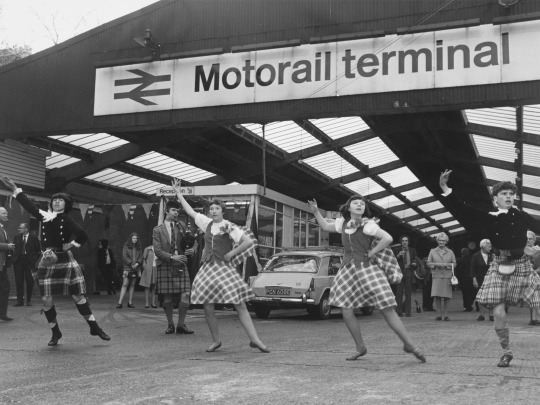
Above: A display of Scottish country dancing at...I think it's Kensington Olympia? No, I don't know why either.
In the 1960s, British Rail officially launched its Motorail service, offering fast travel for passengers and their cars to all parts of the country. To serve Sodor, one of the new services ran twice daily between Kensington Olympia and Vicarstown, and the latter’s existing loading dock was upgraded into a terminal. Two of the car ferry's ten daily crossings clashed with the proposed timings of the new Motorail services, and so were slashed from the timetable. Other than that, the car ferry was able to carry on as normal.
By then, the rolling stock used for the car ferry was beginning to show its age, and a programme of gradual replacement was implemented from about 1966 onwards:
For cars, General Utility Vans replaced the old bogie CCTs, which were retained for parcels traffic.
For commercial vehicles, Carflats replaced the OCTs, which were either scrapped or placed into departmental service.
Finally, for passengers, some of the NWR’s own allocation of BR Mk1s replaced the Bulleid-pattern stock.
The car ferry trains continued unabated into the 1970s, but it was clear they were running on borrowed time - for the first time, demand was beginning to outstrip capacity, and there was no room in the timetable to run extra trains. Then, exactly fifty years after the car ferries had first began, came a blow from which they were never to recover.
THE JUBILEE BRIDGE
That year saw the opening of the Walney Road Bridge, to mark the Silver Jubilee of Queen Elizabeth II. Needless to say, this snuffed out the NWR's car ferry monopoly in an instant. Nobody was more incensed at this development than Sir Topham Hatt, and he saw to it that the NWR was substantially compensated for the extinguishment of their ferry rights.

Above: The Jubilee Bridge. Visitors to Barrow (and native Barrovians, too) may think that this is the only bridge here. This is an illusion!
All was not totally lost, however, for 1977 also saw the extension of BR's existing London-Vicarstown Motorail service to a brand new terminal at Killdane - a more convenient base for the visiting motorist to explore Sodor. Such was the success of this new service that further others were introduced, linking Sodor with other provincial centres. Some of these services employed the stock which had previously worked the car ferry trains.
MODERN DAY MOTORAIL
The expansion of Sodor's Motorail services came during a period of gradual decline for the brand across the rest of BR. The expansion of Britain's motorways, the improvement of car technology, and the chaos of privatisation all ultimately conspired to kill off Motorail by the early-1990s.
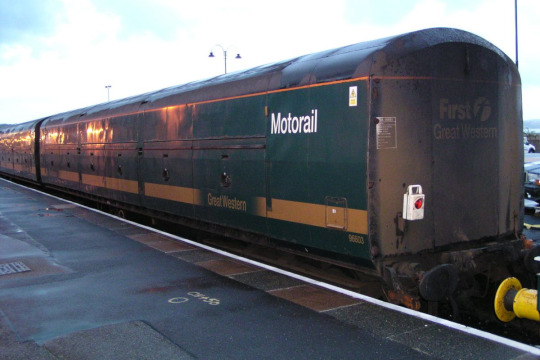
Above: First Great Western briefly revived the Motorail concept in the early-2000s, using a fleet of converted GUVs.
Despite this, Motorail on Sodor has continued to flourish into the present day. Not only are its existing terminals at Vicarstown and Killdane still in operation, but there is now a third terminal at Tidmouth. These form the basis for the NWR's current Motorail services, which all serve to help solve a very basic problem.
The thing is, many visitors to Sodor now arrive in their own cars, but the island's road transport infrastructure isn't really suited to the needs of the long-distance motorist. Fortunately, the NWR has them covered. Special car-carrying trains now run regularly between the Motorail terminals at Vicarstown, Killdane and Tidmouth. While you still have to book in advance, it's a small price to pay for having the convenience of a car at your disposal, without the insanity that comes from having to drive it all the way across Sodor.
Of course, while the NWR's Motorail trains are available to all motorists (local and foreign) the majority of their customers are Mainlanders - the typical Sudrian would just as soon leave his car at home altogether!
42 notes
·
View notes
Text
Any mogul that visits the Island of Sodor is in danger of getting their front pony truck detached in their sleep.
James is the only one allowed, and he goes to great lengths to defend his territory.
#ttte#ttte james#He has to force his crew to do it cuz of his severe lack of arms#lol#Spark's Headcanon
27 notes
·
View notes
Text

aye it be 2/2 again

i did this in like 20 mins sowwy
232 notes
·
View notes
Text
I fancy a Nov. 1929 (Middle) myself!

Chose your new mikado boyfriend (or girlfriend)!!!
Tank engine edition!!!
48 notes
·
View notes
Text

Chose your new mikado boyfriend (or girlfriend)!!!
Tank engine edition!!!
48 notes
·
View notes
Text
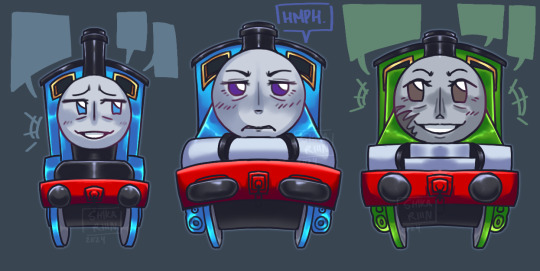
My 2x3x4 agenda
They're teasing him!!!!
232 notes
·
View notes